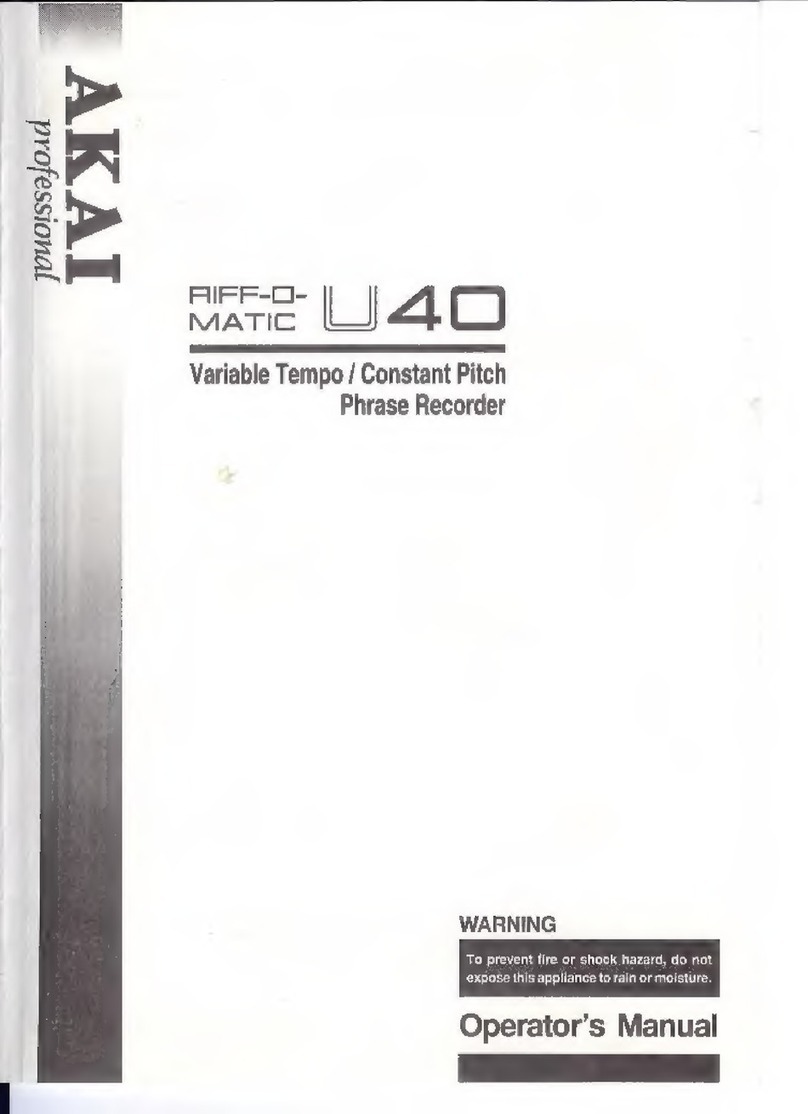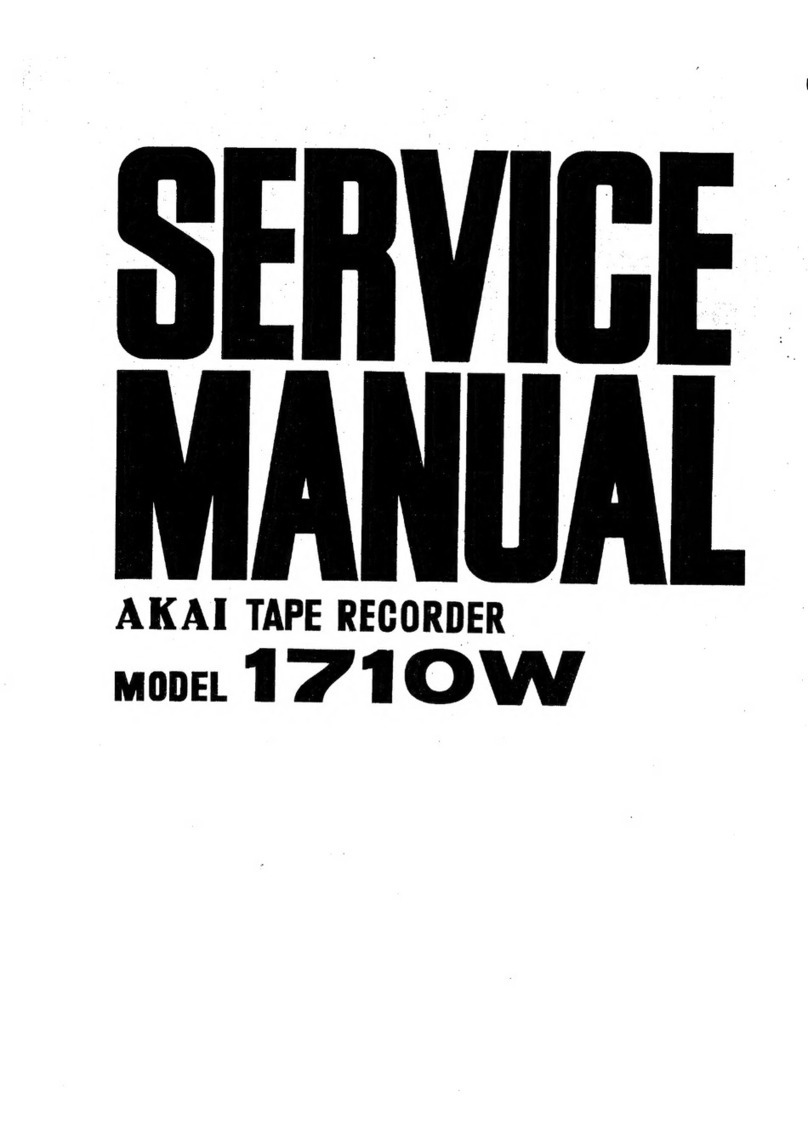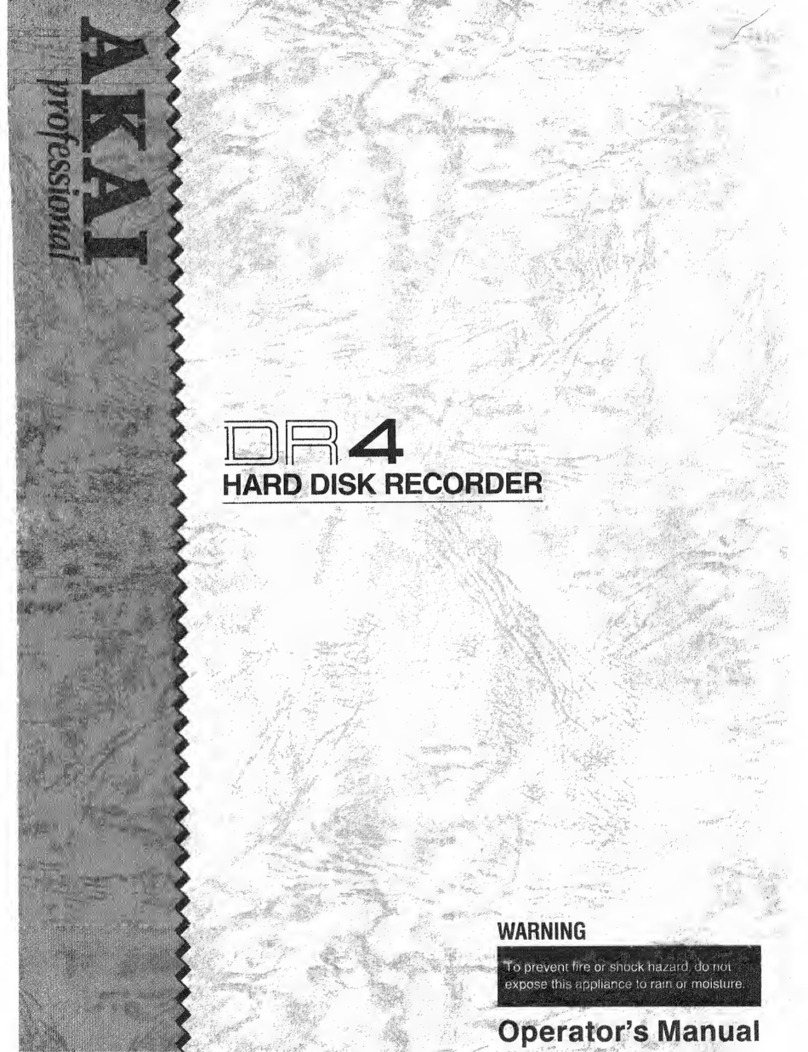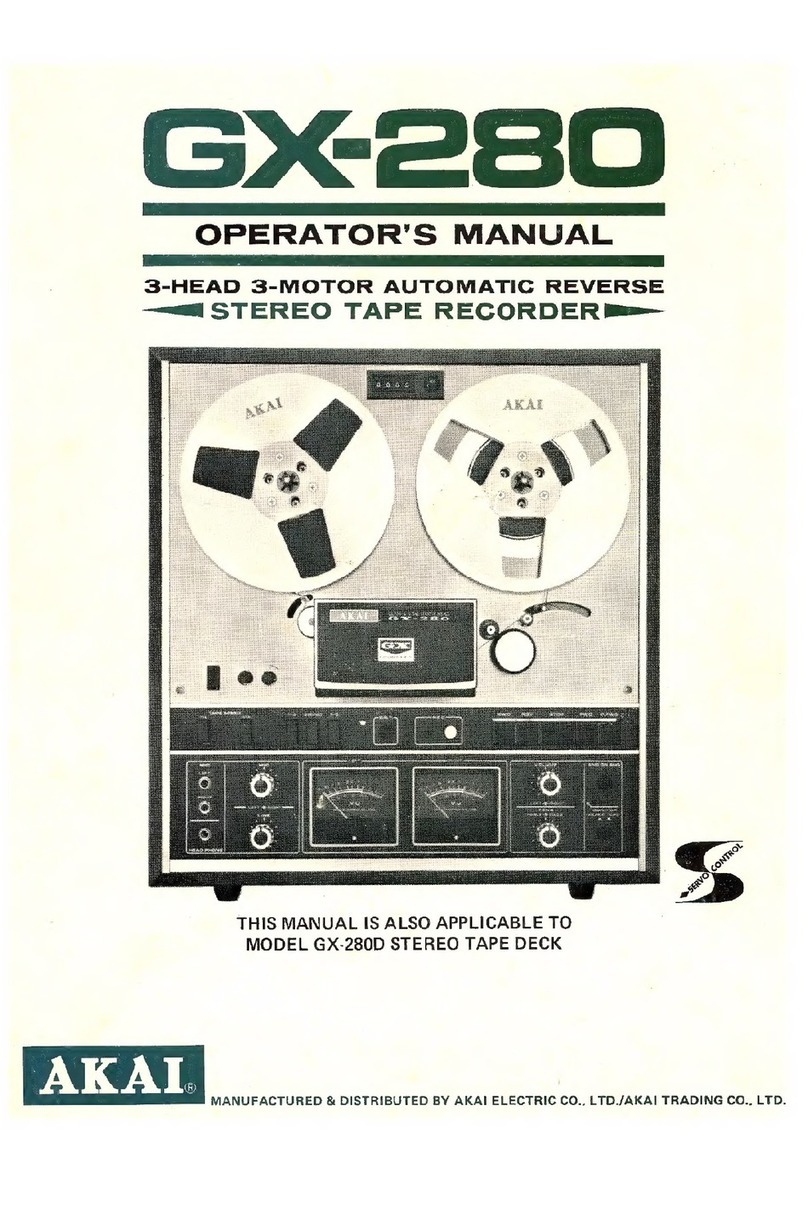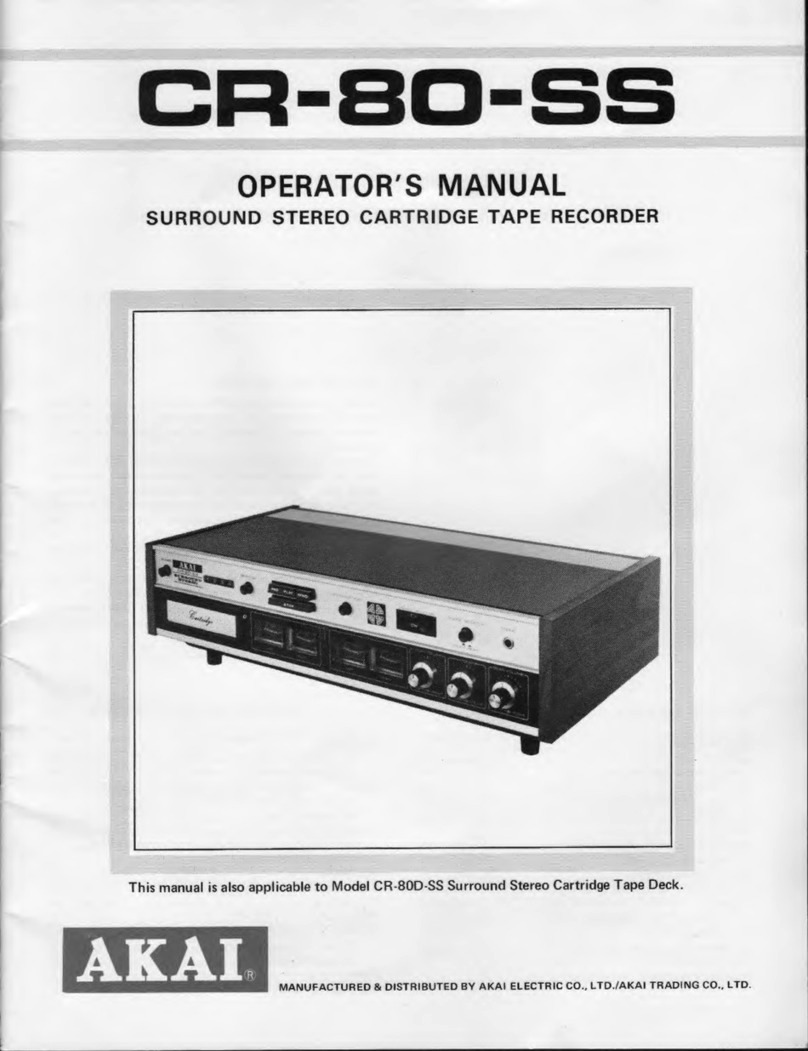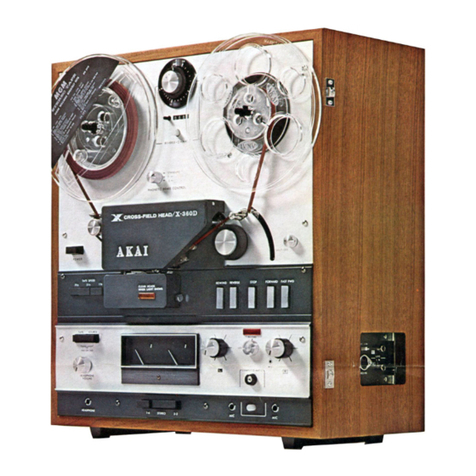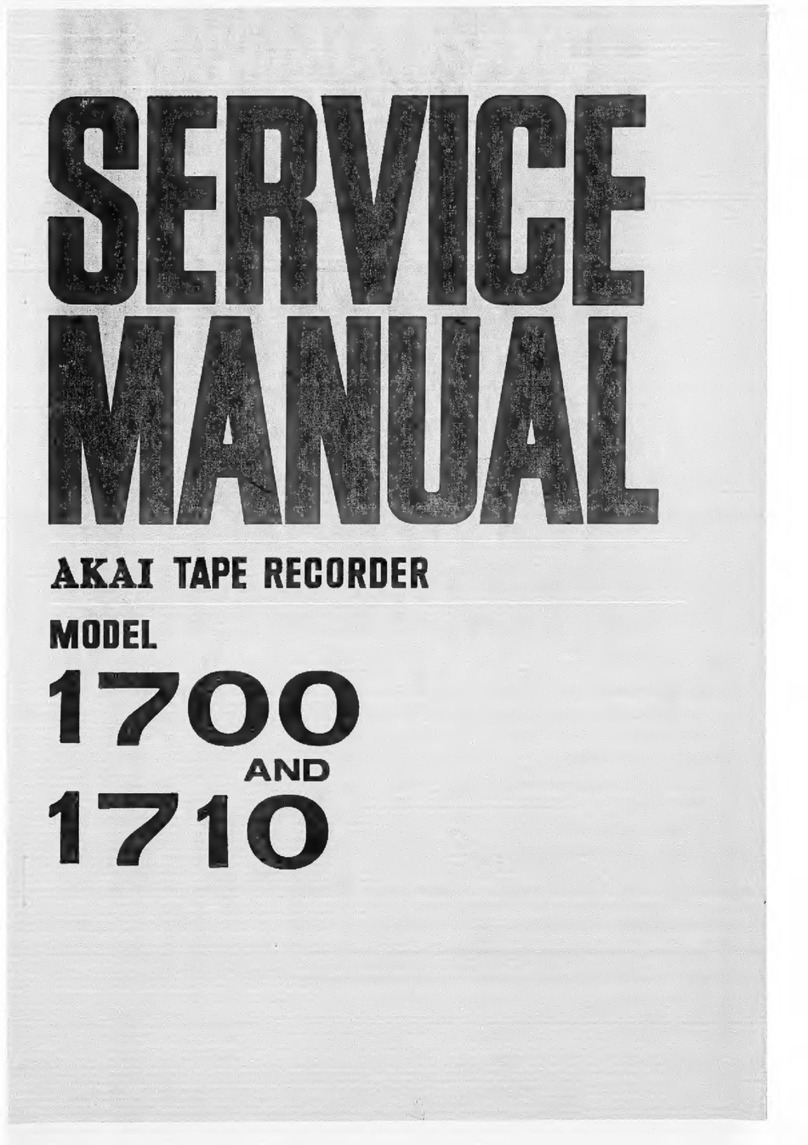
I. INDEXCOUNTER&RESETBUTTON 25. RECORD/PLAYBACKLEVER
For use in locating positions on the tape. For effecting playback or recording mode. For playback, set to
PLAY position. For recording, rvhile depressing Recofding
2. PINCH WHEEL Safety Button, set to REC position.
PÍesses against capstan to transport tape. 26. FAST FORWARD/REWIND LEVER
3. CAPSTAN For effecting fast forward or rewind mode (transports tape at
Transports tape. high sPeed).
4. SUPPLYREELTABLE 27. PAU§ELEVER
Convenient for temporarily suspending tape movement during
5. BUILT-IN SPEAKER recording or playback. To release, depress Start Button.
6. SUPPLYREELRETAINER 28. STARTBUTTON
pull tip of retainer outward and turn to left or right to firmly Releases Pause Lever.
lock reel into place' 29. 'HUT-.FF swrrcH
7. CYCLE CONVERSION SWITCH (A) This srvitch is linked to the Automatic Stop/Shut-Off Lever.
Set to 50 t-{z or 60 Hz according ro area power source. For Set to STOP position for automatic stop, and to SHUT-OFF
details refer to Voltage & Cycle Conversion procedure. position for automatic shut-off.
8. TAPESPEEDSELECTOR 30. EQUALIZERSWITCH
Set to desired tape speed and set Equalizer Switch accordingly. Set to correspond with Tape Speed Selector.
9. TAPE TENSION LEVER (Sensing Pole) 31. POWER SWITCH
Provides proper tension for better tape stabiiity. Also functions
as Sensing pole tor reverse playback. 32. TAPE SELECTOR SWITCH
Depress when using Akai Super Range Tape or other make low
10. SENSING POLE noise tape.
Irunctions as Sensing Pole for continuous reverse playback. 33. RECORDING LEVEL CONTROLS (left & right) (Model
ll. HEAD COVER Gx-221D: Right RECORDING LEVEL CONTROL)
Houses (from lelt to right) Erase, Recording, lnd Forlvard/
Reverse Playback Heads. 34. MICROPHONE JACKS (left & right)
12. MANUALREVERSEBUTTONS 3s. SOUND-ON-SOUNDBUTTON
For effecting manual reverse pla-vback' For sound-on-sound . operatioÍl. Refer to sound-on-Sound
13. TRACK SELECT0R swITCHEs Recording procedure'
For easy selection of, racks for stereo or monaural perfor' 36. RECORDING INDICATOR LAMp
mance' Lights when machine is set to recording mode.
14. MONITOR SWITCH * 37. CyCLE CONVERSION SWITCH (B)
To monitor program source, set to SoURCE position' To setthisswitchandcycleconversionSwitch(A)onfrontpanel
monitor rgcorded signals or for playback. set to TAPE position. L so È, or 60 Hz to correspond with area po$,er source.
15. VOLUME CONTROLS (left and right) (Model GX-221D:
Left Recording Level control) 'e' v^-LLtu ' "' ::Ià*3§:yJÏ:}r,. speaker output, and to oÈ t r,osition ro
16. HEAD*HONE JACK cut speaker output for monitoring or private headphone
For monitoring or private headphone listening. use stereo listening'
headphones of I §) impedance. 39. UNMRSAL VOLTAGE SELECTOR AND FUSE ,OST
17. TONE CONTROLS (bass and treble) Refer to voltage and cvcle conversion procedure
Clockwise increases bass and treble respectively. 40. AC CORD
18. VU METERS (left and right) 41. SPEAKER JACKS (Left/Right)
Indicates recording and playback levels. 42. LINE OUTPUT JACKS (Left/Right)
19. TAPE GUIDE Connects to tape inputs of ixternal amplifier or recorder.
20. RECORDINGSAFETYBUTTON 43. DINJACK
For effecting recording mode, depress this button and set Enables inter-connection with an external amplifier *ith rhe
Record/Playback LeYeÍ to REC position. use of a single Din cord connection.
21. AUTOMATIC STOPISHUT-OFF LEVER 44. DIN JACK HIGH/LOW INPUT S\!'ITCH
22. rAKE.up REEL rABLE i::J ïi'# ?fJï:-,:ï"i;"i1?à'J'r';',:?;'"1"^ï."'iTJ,'i'lï.ï
23. BUILT-IN SPEAKER 50 MV, SEt tO LO\ï POSitiON-
24. TAKE.UP REEL RETAINER 45. LINE INPUT JACKS (LEft/Right)
pull tip of retainer outward and turn to left or right to firmly connects to outputs of external source'
lock reel into place. tr












